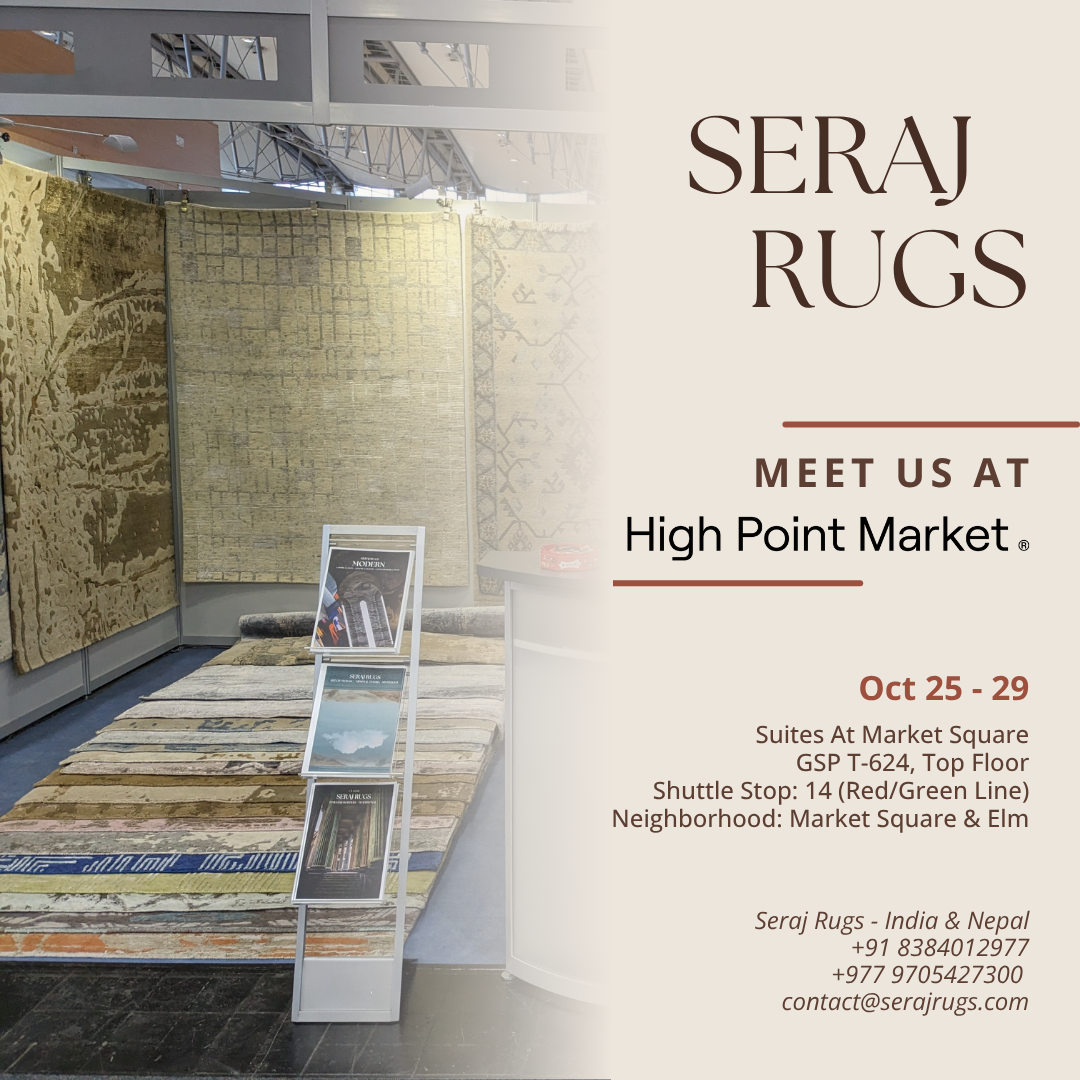When it comes to premium rugs for high-end interior design projects, many U.S. designers are turning to Nepalese custom rugs — and for good reason. At Seraj Rugs, where bespoke rug manufacturing meets unmatched craftsmanship, you get the very qualities that make Nepal-made rugs a favourite in the U.S. market. Here’s why.
1. Exceptional Craftsmanship & Heritage
Seraj Rugs emphasises fine quality & handcraft and positions itself as your premier custom & handmade rug manufacturer, with roots in Nepal and India.
Nepal’s rug-making tradition is built on centuries of artisan skill, and modern designers recognise that. According to one specialist website:
Nepal is home to many different indigenous peoples… Handmade Rugs From Nepal are known for their high quality and beautiful designs.
And the depth of expertise is apparent: designers say Nepal’s manufacturing capability allows “complex and unusual designs … exactly according to the design template.
For U.S. designers working on bespoke interiors, that means you’re not just buying a rug — you’re buying a piece of artisan heritage, precision-executed for your space. Seraj Rugs delivers that kind of bespoke service: step 1 design call, step 2 select quality materials, step 3 manufacture & ship.
2. Customisation, Flexibility & Premium Materials
Interior designers often have exacting requirements: custom size, tailored colours, unique weave densities, and high-end materials. Nepalese rug makers deliver this. For example:
- Nepal rugs often use high-altitude wool, and can incorporate silk for luxury effect.
- Designers note Nepalese manufacture allows “size, colours and material be adjusted to suit your personal wishes.”
Seraj Rugs specifically markets itself as a “bespoke carpet manufacturer” providing custom rugs, handmade masterpieces and wholesale solutions.
The bottom line: U.S. design firms managing projects for luxury homes, boutique hotels or commercial spaces want flexibility. Seraj offers it.
3. Trend-Forward Aesthetics & Timeless Appeal
While heritage is key, so is contemporary styling. Nepalese rugs have evolved to the demands of modern interiors:
Today the Nepalese carpet is recognized worldwide as a symbol of quality and craftsmanship.
And the material emphasises:
Many complex and unusual designs can only be implemented in these manufacture by the experienced weavers in Nepal.
Seraj Rugs lists collections labelled “Classic”, “Minimal”, “Modern” — showing how they cater both to traditional and ultra contemporary environments.
For U.S. designers, this means they can specify a rug that complements minimalist luxury, maximalist glamour, boutique hospitality or residential projects.
4. Durability, Quality & Sustainability
Designers value materials and processes that not only look good, but hold up over time. With Nepalese rugs:
- Manufacturing uses hand-knotting & artisan methods which tend to produce long-lasting rugs.
- Natural materials such as wool and silk promote longevity and quality feel.
- The use of natural or low-impact dyes and materials offers a sustainability plus.
Seraj uses similar language (“top-quality rugs … high quality materials”) in its site copy.
For U.S. design projects where clients expect lasting value, specifying a Nepal-made custom rug via Seraj makes practical sense.
5. Competitive Value & Boutique Appeal
While bespoke, handmade rugs are never low-cost, Nepalese manufacturing offers value compared to some other luxury origins. The purchasing guide notes:
“Nepal rugs are available with different knotting densities … high quality Nepal rugs have a high knot density, which ensures a long service life.”
Seraj Rugs presents itself as a wholesale and custom manufacturer, meaning U.S. designers can work directly or via trade programmes to access high-end rugs without excessive mark-ups.
For design-led U.S. projects where cost efficiency and design integrity are both required, Seraj offers a smart sourcing option.
6. Authentic Story & Artisan Impact
Increasingly, design clients care about provenance, ethical sourcing and the story behind products. Nepalese rug-making offers exactly that: artisan heritage, hand-made craft, and cultural value. For example:
“The global appetite for authentic, artisanal home goods has positioned Nepali rugs as coveted luxury items.”
Seraj’s own website emphasises artisan tradition: “Every knot … a testament to the country’s artisanal brilliance.”
Thus for U.S. design firms seeking to offer clients a meaningful, premium product with a story behind it, Seraj’s Nepal-manufactured rugs are an aligned choice.
Conclusion
In the competitive world of U.S. interior design, where clients demand beautiful, custom, high-quality products — the kind of craftsmanship, material excellence, flexibility and authenticity offered by Nepalese custom rugs stand out. Thanks to manufacturers like Seraj Rugs, designers in the USA can specify rugs that meet the highest aesthetic, technical and ethical standards.
If you’re a U.S. designer looking to source custom rugs, I’d highly recommend exploring Seraj Rugs’ catalogue and custom program — you get the best of Nepalese artisan tradition combined with modern design flexibility and global export readiness.

